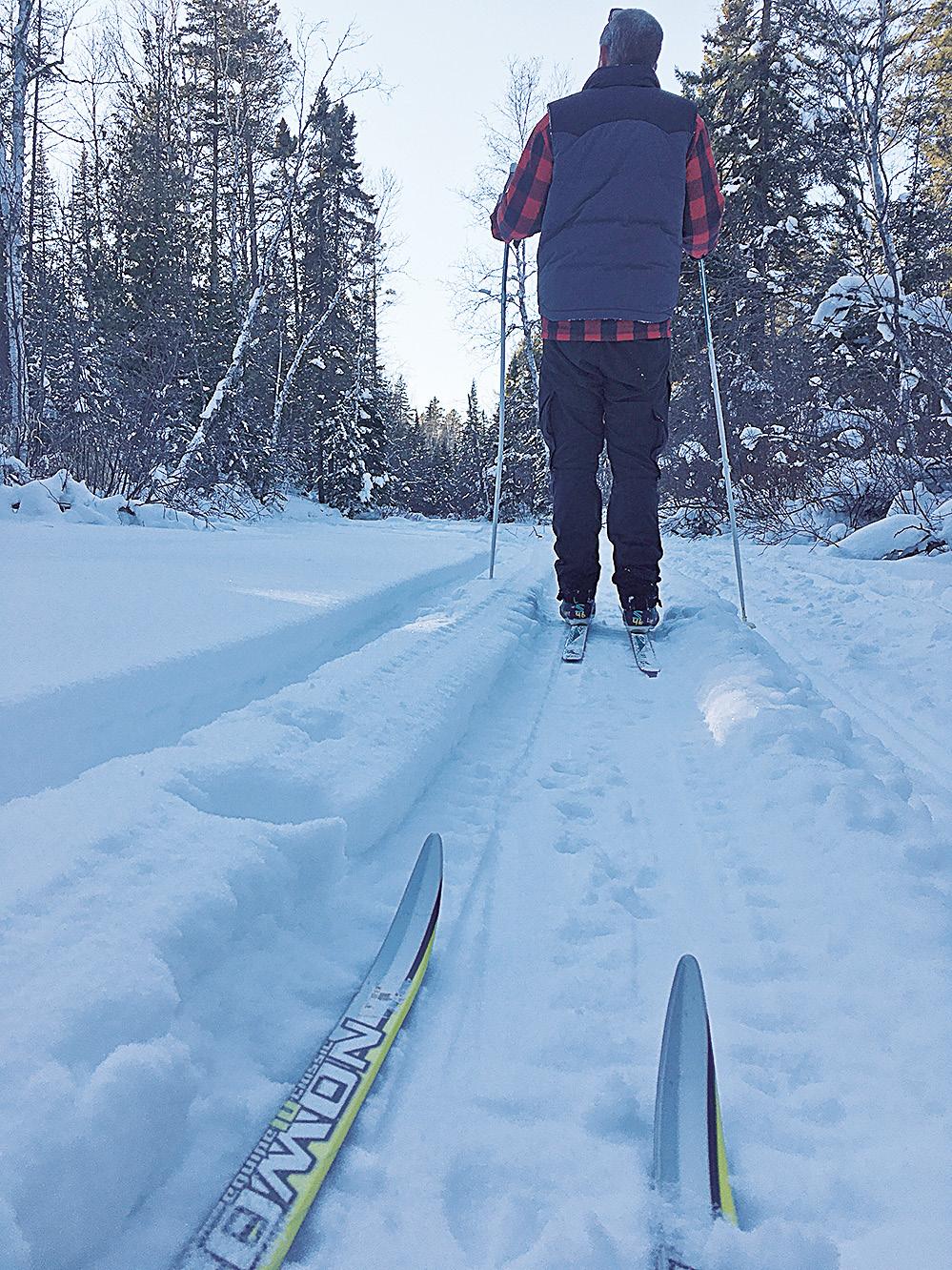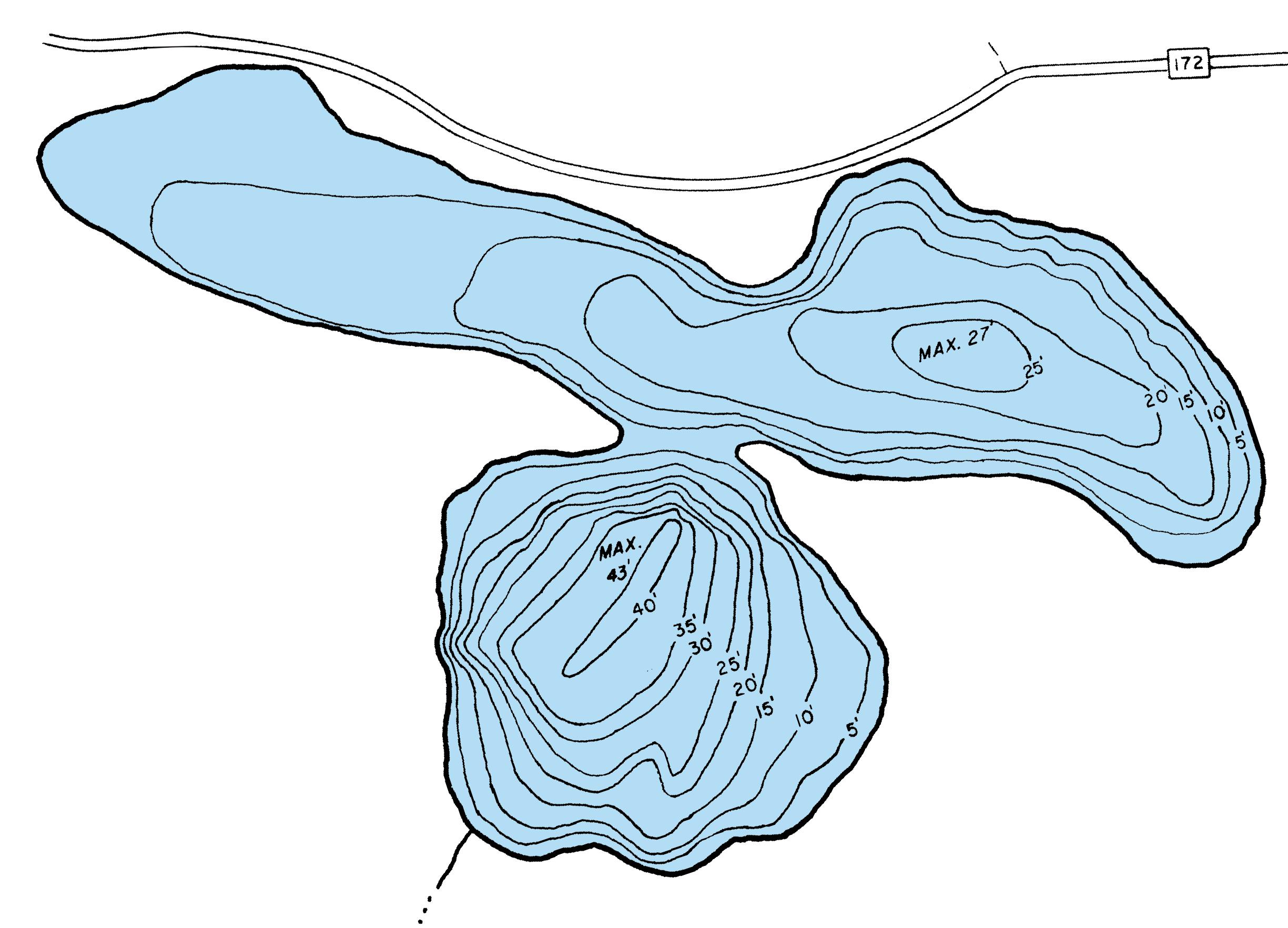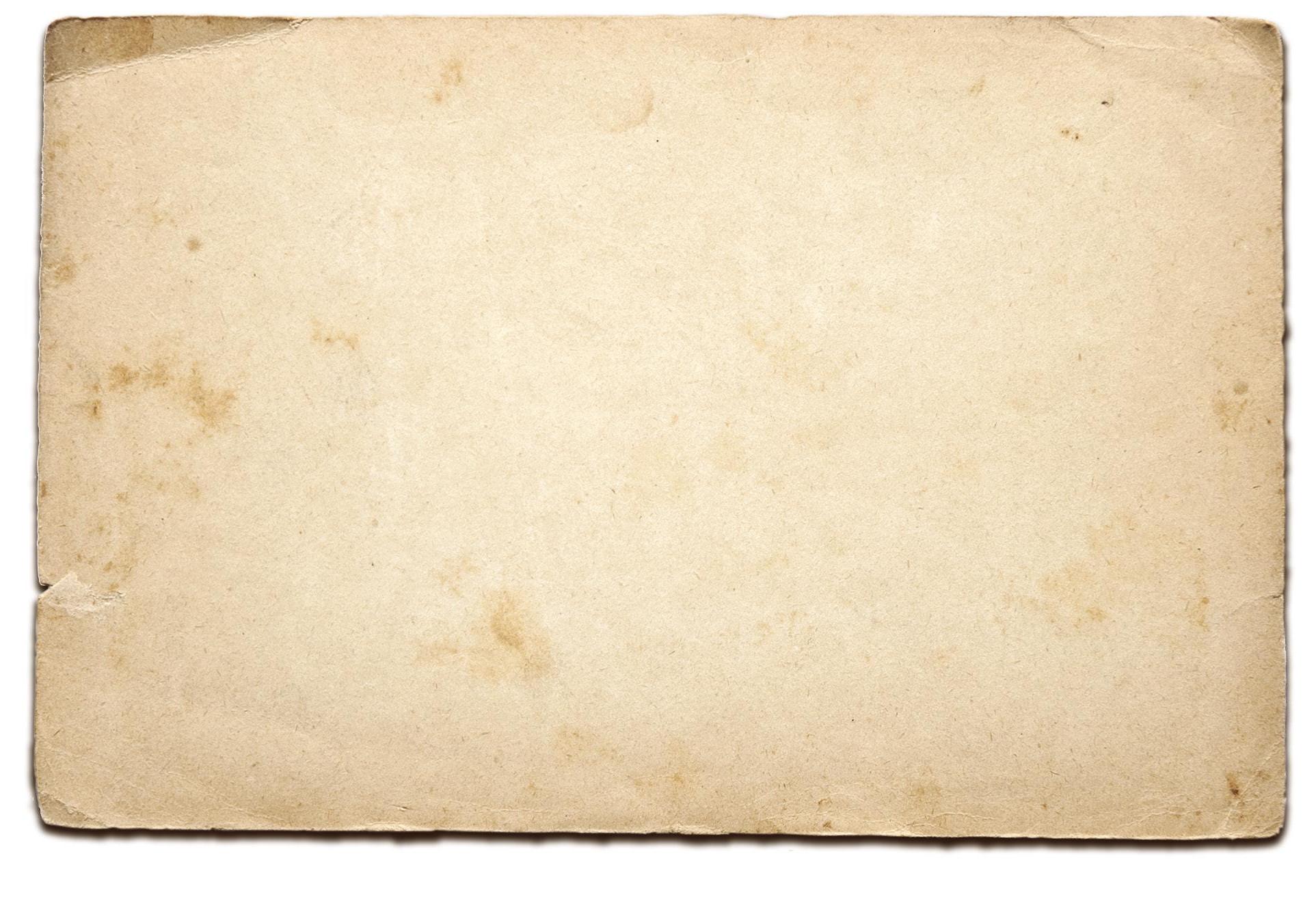
4 minute read
Fishing Hole
units of the Swedish army trained on skis.
From survival and transportation to recreation and sport, here is a short glimpse into the types of skiing and ski styles, and how they’ve evolved into what many of us know and use today.
Advertisement
Cross-Country Skiing
Originating in Scandinavia thousands of years ago, cross-country skiing wasn’t introduced to Canada until the 1890s, according to the Canadian Encyclopedia, which reads:
“In the early stages of the sport, most skiers carried a single pole and wore long (2.5 to 4m), wide (over 80 mm), unlaminated wooden skis that were so heavy…skiers usually removed them and carried them up steep hills.”
The Norwegian Thorleif Haug is credited with inventing a more modern binding with screw-on steel toeplates, which allowed skis to be stronger, shorter, more narrow and lighter.
With the Canadian Pacific Railway’s introduction of the Laurentian ski trails in Quebec, cross-country skiing began to take on a more recreational form. Avid skiers like “Jackrabbit” Johannsen were trailblazers of their time, developing large networks that were similarly developed all across North America just before World War II.
Today, two Nordic ski centres in Thunder Bay, Lappe Ski Centre and Kamview Nordic Centre, maintain an extensive network of classic and skate ski trails nestled in the forests on the city’s outskirts. The trails are used for recreation and competition each year, in addition to lessons for skiers of all ages. Even dogs are welcome on some of Kamview’s trails, too.
Cambered Ski
Developed in Telemark, Norway, woodcarvers created a bow-shaped cambered ski that arches toward the center to distribute the weight of the skier more evenly across the length of the ski. This design principle remains consistent today for many Nordic ski styles. Before the invention of camber, skis had to be thick and plank-like to glide without bowing downward, causing the skier to sink in the snow under their own weight. Camber made thinner, lighter skis possible, allowing the skier to glide and float more easily across snow. They also offered more flexibility over bumps and easier maneuverability to swing and turn.
Telemark Skiing
Also originating in the Telemark region of Norway, telemark skiing combines elements of Alpine racing, Nordic skate skiing and ski jumping, and was once a popular mode of backcountry transportation. Synthetic fabric skins allowed for uphill travel into wilderness environments, and in the 1800s, skiers challenged one another on all sorts of terrains that involved steep climbs and bumpy courses, often ending in sharp turns on a field or icy lake. Today telemark racing is now a World Cup sport focused on carving.
Specialist sports aside, skiing on the North Shore continues with recreational gusto today. Just spend a day sharing the trails with nearly 1,000 amateur and professional-class skiers at the Sleeping Giant Loppet, an annual ski festival hosted at Sleeping Giant Provincial Park east of Thunder Bay, and you’ll know what I’m talking about. The Loppet is cancelled this year due to the COVID-19 pandemic, but many of the region’s trails are open and maintained for your enjoyment.
One of the perks of living in the Lakehead watershed is exploring Thunder Bay’s urban waterways, like the McIntyre River (pictured here)
during winter. | JULIA PRINSELAAR
BY JOE SHEAD
WHY GO: Hogback Lake is one of the most popular designated trout lakes in the Finland area. Rainbow trout and splake are stocked annually, with splake sometimes topping 20 inches.
ACCESS: Hogback Lake lies 12 miles east of Isabella on USFS Road 172 (Wanless Road). The lake features a USFS fishing pier, a gravel boat ramp, three roadside campsites and a remote campsite. In addition, hiking trails wrap around the lake and nearby Scarp Lake. The shoreline is entirely publicly owned.
VITALS: Hogback Lake is like having two lakes in one. The entire lake encompasses 40 acres. The main lake (where the boat landing is) is shallower and larger. If you head south, you can squeeze through a shallow, narrow channel. This part of the lake (sometimes called Canal Lake) is only 14 acres, but it bottoms out at 43 feet. Trout can be found in both basins.
GAME SPECIES PRESENT: Rainbow trout, splake, and yellow perch.
RAINBOW TROUT: “Hogback has been traditionally one of our stronger trout fisheries,” said Dean Paron, Finland Area Fisheries Supervisor. Paron said each spring, the DNR stocks 1,000 rainbow trout yearlings that measure about 10 to 12 inches when stocked. These are already of harvestable size when trout season opens in May.
SPLAKE: Splake can grow large in Hogback. Each fall, 4,000 splake fingerlings measuring about

HOGBACK LAKE

6 inches are stocked. Wary specimens can grow to 20 inches or more if they avoid anglers.
YELLOW
PERCH: Yellow perch somehow showed up in the lake in recent years and they are becoming numerous. Paron said perch compete with trout for food and are considered undesirable in put-and-take trout lakes. Paron said the perch are small and are a nuisance to shore anglers fishing with nightcrawlers.
BONUS BROOKIES: Crazy things happened in 2020. Paron said the DNR received some large, 1.5-year-old brook trout that needed to be stocked, so about 300 were placed in Hogback. Anglers enjoyed the one-time stocking and caught some good-sized trout. If any remain, they will be large.
THE FUTURE: Due to the popularity of winter trout fishing, Paron said the DNR is looking into doing a fall rainbow trout stocking in addition to the spring stocking to provide more opportunities for winter anglers. For now, anglers will have to tolerate Hogback’s small, pesky perch. If trout growth rates suffer, Paron said the DNR could consider reclaiming the lake.











